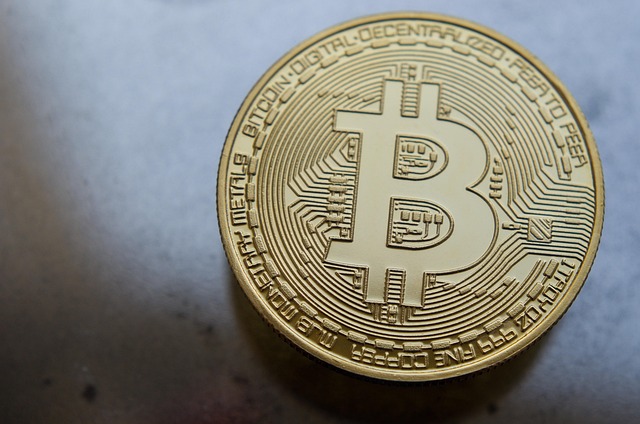What Is the Point of Futures Trading in 2025?
Author: Jameson Richman Expert
Published On: 2025-09-26
Prepared by Jameson Richman and our team of experts with over a decade of experience in cryptocurrency and digital asset analysis. Learn more about us.
The primary objectives of futures trading—namely risk management, speculation, and profit maximization—remain fundamental pillars in 2025. However, the landscape has evolved into a highly sophisticated arena, shaped by rapid technological innovations, the explosive growth of digital assets, and shifting macroeconomic and geopolitical dynamics. Today’s futures markets are more accessible, complex, and integral to a broad spectrum of investors, from large institutional players to retail traders. To understand the current purpose and strategic significance of futures trading in 2025, it’s crucial to explore its underlying mechanics, strategic applications, technological integration, and the nuanced risks that accompany this dynamic environment.

Understanding Futures Trading: Mechanics and Asset Scope
Futures contracts are standardized agreements that commit the buyer to purchase, and the seller to sell, an underlying asset at a predetermined price on a specified future date. These contracts are traded on regulated exchanges such as the Chicago Mercantile Exchange (CME), CBOE, Binance Futures, BitMEX, and others. These platforms provide essential functions including clearing, settlement, and transparency, ensuring that both parties fulfill their contractual obligations and that markets operate smoothly.
The universe of underlying assets for futures trading has expanded dramatically. Traditional commodities like crude oil, gold, natural gas, agricultural products (soybeans, wheat, coffee), and metals continue to be prominent. Financial derivatives like stock indices (e.g., S&P 500, NASDAQ), interest rate swaps, foreign exchange pairs, and treasury yields are also extensively traded through futures contracts. Significantly, the digital asset class has seen unprecedented growth—cryptocurrencies such as Bitcoin (BTC), Ethereum (ETH), and various altcoins are now standard offerings, often with futures contracts that include features like perpetual swaps and options, enabling traders to hedge or speculate on crypto markets with leverage ratios reaching up to 125x on certain platforms.
Unlike spot trading, which settles transactions immediately at current market prices, futures facilitate forward-looking speculation and serve as vital hedging tools. Leverage amplifies traders’ exposure, allowing control of larger positions with less capital—though this also magnifies potential losses. As market volatility intensifies in 2025—fueled by geopolitical conflicts, economic policy shifts, and technological disruptions—advanced risk management techniques, including dynamic margining and real-time risk analytics, are essential. Traders often analyze ratios such as BTC/ETH or monitor macroeconomic indicators like inflation rates, interest rate trajectories, and geopolitical risks, leveraging comprehensive data and predictive models to inform their trading decisions.
The Strategic Significance of Futures: Hedging and Speculation
Futures markets serve dual strategic functions—risk mitigation through hedging and market opportunity through speculation—that underpin their central role in modern finance. Hedgers, including miners, agricultural producers, shipping companies, and institutional investors, utilize futures to lock in prices or costs, thus insulating themselves from adverse price movements. For example, oil producers might hedge future production to stabilize revenue amidst volatile crude prices, or a cryptocurrency mining firm could hedge crypto holdings to manage exposure to BTC price swings.
Speculators aim to profit from anticipated price moves without the intent of physical delivery. They employ technical analysis, macroeconomic forecasts, sentiment indicators, and increasingly, algorithmic trading systems powered by AI and machine learning. The rise of high-frequency trading (HFT) and quantitative strategies has exponentially increased the speed, volume, and precision of speculative bets in 2025. These systems analyze vast datasets—from market microstructure to social media sentiment—responding swiftly to news, geopolitical events, or market shocks to capitalize on transient opportunities or hedge risks efficiently.
Market Efficiency and Price Discovery in Futures Markets
Futures markets are vital for ensuring overall market efficiency through liquidity provision and accurate price discovery. When new macroeconomic data, geopolitical tensions, or technological breakthroughs emerge, futures prices tend to adjust rapidly, reflecting collective expectations about future supply, demand, and risk. These price adjustments facilitate arbitrage between spot and futures markets, aligning valuations and reducing market inefficiencies.
Technological tools such as advanced charting software, machine learning-based predictive models, and sentiment analysis platforms are now integral to traders’ workflows. They incorporate indicators like Moving Averages, Relative Strength Index (RSI), Bollinger Bands, and Ichimoku Cloud, combined with macroeconomic calendars, geopolitical news feeds, and social media analytics. AI-driven predictive analytics further enhance the accuracy of market forecasts, allowing traders to navigate complex, fast-moving environments more effectively and with greater confidence.

The Role of Cryptocurrency Futures in 2025
Cryptocurrency futures are instrumental in the maturation of digital asset markets, offering mechanisms for speculation and hedging outside traditional spot exchanges. Major exchanges such as Binance, MEXC, Bybit, and Bitget provide a rich array of crypto futures products—perpetual swaps, options, and leveraged tokens—often with leverage ratios up to 125x. These instruments enable traders to amplify exposure, hedge against volatility, and engage in complex strategies like arbitrage, spread trading, and options layering.
For instance, Binance’s futures platform allows traders to implement high-leverage positions while employing robust risk controls such as margin insurance and liquidation mechanisms. Crypto futures markets, characterized by extreme volatility driven by technological developments and regulatory evolutions, demand disciplined risk management. Institutional involvement is increasing, which contributes to market depth, reduces spurious volatility, and fosters greater liquidity. As 2025 progresses, regulatory emphasis on transparency, security, and compliance is shaping these markets toward maturity and resilience.
Advanced Strategies and Technological Tools for Futures Trading
Success in futures trading in 2025 hinges on mastery of sophisticated strategies coupled with cutting-edge technological tools. Traders utilize Fibonacci retracements, volume profile analysis, oscillators, and sentiment indicators—integrated with macroeconomic data—to identify optimal entry and exit points. Macro insights, such as central bank policy signals, inflation reports, and geopolitical developments, are incorporated into multi-factor models that dynamically adapt to market conditions.
Real-time news feeds, economic calendars, and sentiment platforms are vital for rapid decision-making. Unexpected policy shifts, geopolitical crises, or technological breakthroughs can trigger swift, significant price swings, requiring traders to react promptly. Multi-layered analytics models synthesize technical, fundamental, and sentiment data, enabling traders to develop nuanced, adaptive strategies amidst the multilayered complexities of global markets in 2025.
Automation, AI, and Algorithmic Trading in Futures Markets
The integration of automation and AI-driven strategies is revolutionizing futures trading. Advanced trading bots, built using APIs and sophisticated algorithms, execute orders based on predefined parameters, eliminating emotional biases and allowing rapid, precise responses to market signals. Developing effective bots involves rigorous backtesting, continuous optimization, and integration with high-quality data sources, as detailed in this comprehensive guide.
Emerging AI techniques incorporate blockchain transaction analytics, social media sentiment, macroeconomic indicators, and geopolitical event data to generate predictive insights that surpass traditional models. These tools enable traders to adapt strategies in real-time, implement advanced risk controls, and seize fleeting opportunities—making AI and automation indispensable components of modern futures trading infrastructure.

Risks, Challenges, and Regulatory Considerations
Despite the promising landscape, futures trading involves substantial risks. High leverage can lead to rapid capital erosion during adverse market moves, while unexpected geopolitical shocks or macroeconomic shifts can cause sudden, severe price gaps. Liquidity constraints in certain markets may hinder order execution and increase transaction costs. Effective risk mitigation—using stop-loss orders, diversification, and disciplined position sizing—is critical.
Regulatory landscapes across jurisdictions influence trading conditions, platform accessibility, and compliance standards. Reputable exchanges such as Bitget and Bybit maintain stringent security measures and adhere to evolving regulatory standards. Staying informed about global regulatory shifts and ensuring platform security are fundamental to sustainable trading in 2025.
Future Outlook: Innovations and Market Evolution in 2025
The future of futures trading in 2025 is set to be shaped heavily by technological and structural innovations. Blockchain-based settlement protocols promise to significantly reduce settlement times and bolster transparency, ultimately diminishing counterparty risks. Decentralized finance (DeFi) platforms are democratizing access to futures markets, reducing reliance on centralized exchanges, and enabling retail traders worldwide to participate more freely.
Advances in AI analytics—particularly predictive modeling, sentiment analysis, and blockchain activity monitoring—will further enhance traders’ ability to anticipate shifts with higher precision. Institutional participation continues to grow, enhancing market liquidity and depth, which in turn reduces spreads and fosters more efficient price discovery. New financial products such as volatility indices, advanced options layering strategies, and integrated risk management tools will promote greater market stability and inclusivity.
Resources like this NinjaTrader data feed guide highlight the importance of high-quality, integrated data infrastructures for supporting complex, automated futures trading setups amid a highly interconnected digital economy.
Conclusion
Futures trading in 2025 remains a cornerstone of modern financial markets—supporting risk mitigation, enabling speculative strategies, and contributing to market efficiency. Driven by relentless technological innovation, clearer regulatory frameworks, and expanding digital asset markets, futures are more dynamic and accessible than ever before. Success in this environment demands continuous learning, disciplined risk management, and strategic deployment of advanced tools such as AI, automation, and big data analytics.
Staying well-informed through reputable sources like CryptoTradeSignals and adopting adaptive, data-driven strategies will be essential for traders looking to thrive amidst the rapid transformations of the 2025 financial landscape. Approached with discipline, innovation, and a keen eye on emerging trends, futures trading offers substantial opportunities for growth and profit in the evolving digital economy.